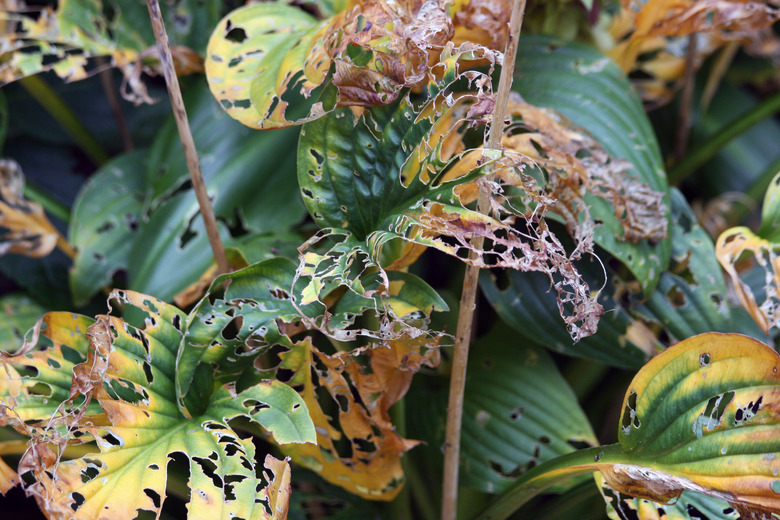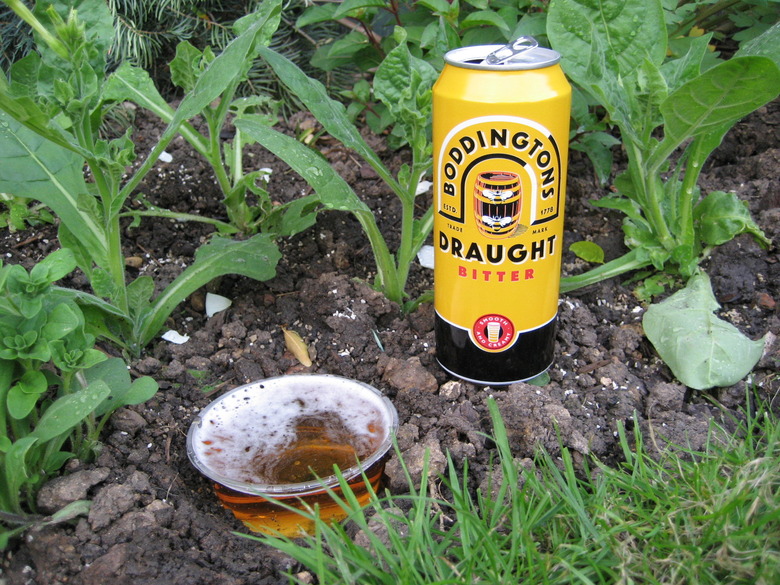Slugs On Hostas: How To Control Them
Those voluptuous hosta leaves that spread across your landscape add drama and mystique to your garden, but they also are a powerful attractant to slugs and their slimy counterparts: snails.
The good news is that it's fairly easy to identify that slugs or snails are the culprits and then to address the problem. The bad news is that these unsavory gastropods can quickly make a hole-ly mess of your verdant hosta (Hosta spp.; USDA zones 3 through 8). Take action before that happens.
Identifying Slug or Snail Damage
Hostas that are being targeted by slugs will display irregular, but smooth, holes along the leaf edges or between the veins. Slugs can also cut off an entire leaf at the stem, so you might see a wilted, chewed leaf under your hosta.
And, of course, they leave those slimy, shiny trails, both on the leaves and in the area around the plants. If you see any evidence of this, it's time to protect your hostas.
Good Garden Practices to Deter Slugs
Slugs love a moist environment, especially one that harbors nice hiding spots where the slug or snail can hang out during the hot day. So the first thing to do is to remove any piles of yard debris from your yard, especially near your hostas. This includes wood piles, weed piles, rocks and low foliage.
Tip
Leave a few wood boards, perhaps just 1 foot long, around the area where your hostas are planted, and place some bait under them, like bits of cabbage or potato. Check these each morning; you will likely have attracted slugs to their undersides. At that point, you can dispose of them easily.
Overly thick layers of mulch can also hide slugs, so thin any thick piles of mulch. In addition, consider pruning some plants to allow in more light.
Natural Methods to Kill Slugs
The most common household method recommended to kill slugs is to use beer or any other fermented or yeast-containing liquid. Pour some liquid into a shallow pan like a pie plate; then sink it into the soil in areas around your hosta so that the lip of the container is just barely above the soil. The slugs or snails will obligingly climb right in and drown. Be sure to empty and refill these containers regularly.
In addition, spread diatomaceous earth under your plants. This substance has sharp edges and provides an unwelcome mat to invading slugs, in some cases even scratching their skin to the point of dehydration and death.
Warning
While putting salt on a slug will definitely kill it, causing dehydration and death, salt will also contaminate the soil, making it inhospitable to plants. In addition, putting salt on a slug borders on cruelty, although it's not clear as to what degree slugs feel pain. In any case, avoid it.
Pesticide Baiting to Kill Slugs
As a last resort, use commercial pesticide to kill slugs. Experts recommend avoiding various pesticides that contain mesurol or metaldehyde and instead using products featuring iron phosphate as their main ingredient, which is safe around veggies and fruits in your garden. For example, some commercial products that contain iron phosphate include Bonide Slug Magic Pellets, Whitney Farms Slug & Snail Killer or Monterey Sluggo.
Be sure to follow product directions carefully for application rates and usage.

